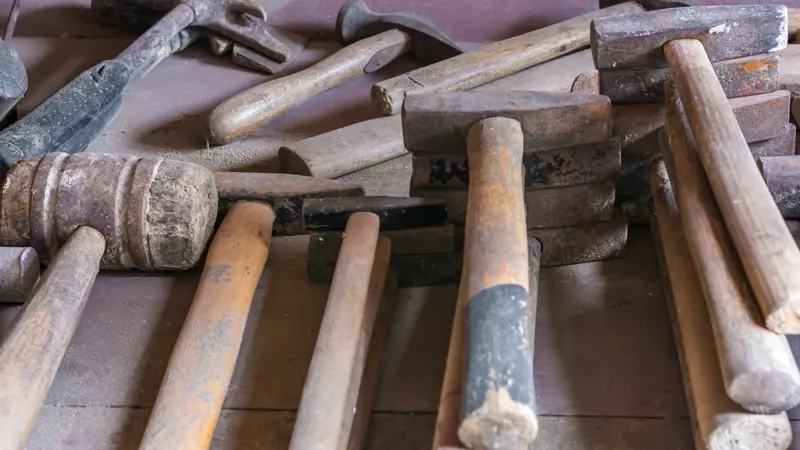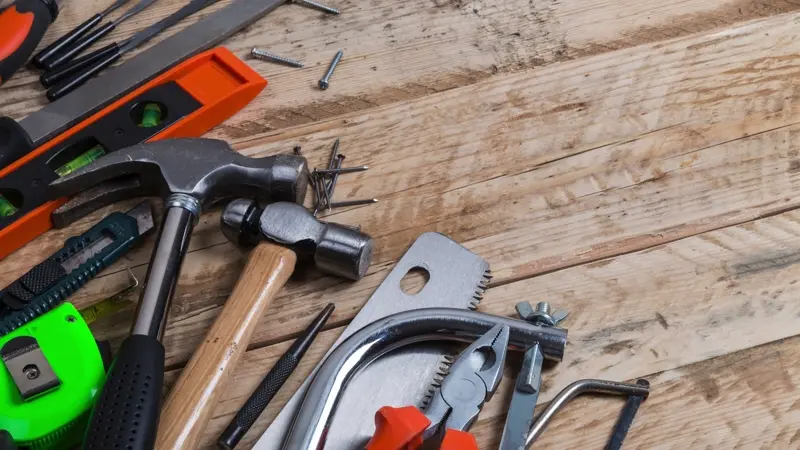The hammer is an essential tool in both professional and DIY workspaces, and a toolbox isn’t truly complete without one. While the claw hammer is often the first type that comes to mind, it’s important to recognize that there are numerous styles and types of hammers tailored for different tasks. We will delve into types of the most commonly used hammers and highlight their individual uses, ensuring you select the ideal tool for your upcoming project.
Table of Contents
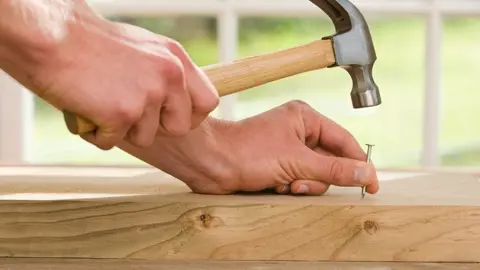
1. Claw Hammer: The All-Purpose Tool
The claw hammer is an essential tool for both DIY enthusiasts and professionals, known for its unique and practical design. It features a sturdy head with two key components: a flat face that drives nails accurately into various materials, and a curved claw for easily prying out nails. These functions make the claw hammer a highly versatile tool suitable for an array of tasks, from hanging pictures at home to more demanding construction work like framing walls or fitting cabinets. The design balances the weight from the head to the handle, ensuring comfort and precision during prolonged use, which helps maintain accuracy and minimizes user fatigue. Durable and user-friendly, the claw hammer is a fundamental item in any toolkit, synonymous with practicality and effectiveness in tools.
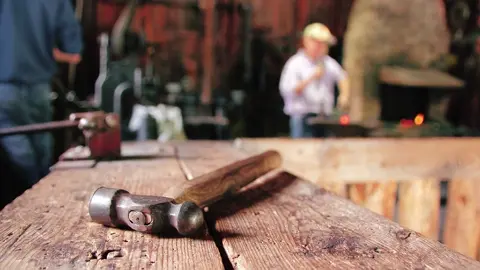
2. Ball Peen Hammer: The Metalworker’s Choice
The ball peen hammer is an essential tool for metalworkers, often considered the primary choice for engineers needing to shape metal precisely and with ease. This hammer is well-known for its dual-purpose design; it features a flat side that’s perfect for striking and shaping metal according to the worker’s intentions. The other side, topped with a rounded “peen,” which gives the hammer its name, is engineered for more refined tasks such as finishing rivets or smoothly rounding edges.
Built to last, the ball peen hammer’s sturdy construction reliably withstands the demanding impacts of metal fabrication, proving it to be a vital part of any metalworker’s kit. The tool balances toughness with functional design flawlessly. Its global presence in workshops underscores its critical role in metalwork and its contribution to various industries over time.
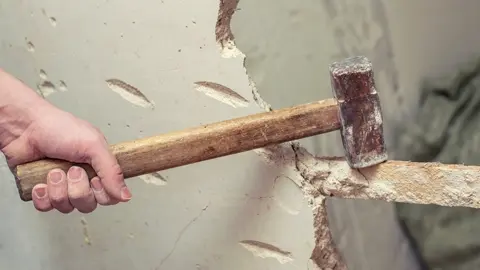
3. Sledgehammer: For Heavy-Duty Demolition
In construction and demolition, where strength is key and only the most durable tools will do, the sledgehammer is essential. It’s not just a tool, but a symbol of our ability to work with materials. Its sturdy handle provides a firm grip, amplifying the user’s power into something formidable. The heavy head focuses this power, making each hit a significant strike against seemingly unyielding structures. Whether tearing down walls for renovations or breaking stone to forge new paths, the sledgehammer epitomizes sheer force. It’s crucial for delivering powerful blows in demolition work and is a fundamental piece of equipment for those who rebuild our surroundings by dismantling what’s outdated to create space for the new.
4. Rubber Mallet: Gentle Persuasion
While brute force is often praised in the world of tools, the rubber mallet is valued for its gentle precision. It proves that not every problem needs a forceful approach; a soft nudge is sometimes not just preferable, but also necessary. The rubber mallet’s pliable head delivers a cushioned blow that nudges materials into place without causing harm. This is in contrast to metal hammers that often leave dents and damage behind.
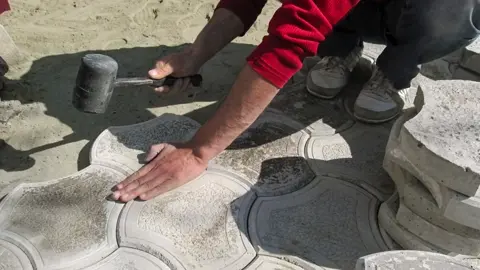
Woodworkers particularly appreciate the rubber mallet for its ability to assemble joints, guide chisels, and fit dowels with great attention to detail. Floor installers also prefer it for placing fragile tiles that would break under a steel hammer’s weight. In any scenario where a measured force is needed to maintain the quality of the material being worked on—whether it’s aligning components during assembly or gently moving stubborn equipment—the rubber mallet is indispensable. It represents precision and controlled power with each tap.
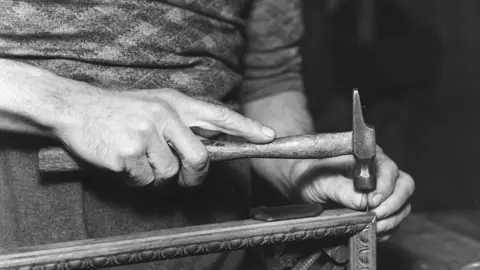
5. Framing Hammer: The Carpenter’s Companion
The framing hammer is a critical tool for any skilled carpenter, standing out from the common claw hammer. It’s specifically designed for the demanding nature of framing jobs and features a heavier build for strength. The key difference lies in its design; the framing hammer has a straight claw, which is excellent for prying apart wooden boards during frame adjustments or disassembly. Another distinctive feature is its waffled face, which helps prevent nails from slipping off the hammer’s head, increasing both precision and safety during intense framing work. Essential for constructing house frames or large furniture structures, the framing hammer is prized by carpenters for its reliability and effectiveness in their craft.
6. Tack Hammer: Delicate Tasks
The tack hammer, essential for upholstery work, is lightweight and features a dual-face design for different tasks. One side has a magnetic feature that holds small nails and tacks, reducing finger injury risk and improving precision. The opposite side is designed for driving tacks accurately into furniture frames without compromising the fabric or frame’s durability. This tool allows for control and precision in attaching fabric, even when it’s tightly stretched, maintaining the material’s quality and the furniture’s stability.
Selecting the Right Hammer
Choosing the appropriate hammer for construction or home improvement is crucial, much like finding the right key for a specific lock—it must be suitable for the task.
For a wide range of jobs requiring both driving and removing nails, the claw hammer is the ultimate all-purpose tool due to its dual functionality.
For metal molding or shaping, the ball peen hammer is essential, as its rounded end is designed for these specific tasks.
For demolition work, a sledgehammer is the preferred tool because its heavy build and strong handle deliver powerful impact, making it perfect for breaking through walls or cracking hard surfaces.
When precision is necessary for small nails or tacks in tasks such as upholstery or crafting precision, a tack hammer is designed to deliver accurate results with minimal force.
Framers and woodworkers frequently choose framing hammers, which are heavier and have longer handles to drive nails into dense materials more efficiently with fewer strikes.
To avoid surface damage when working with delicate materials like tiles or assembling furniture, a rubber mallet is the best choice as it applies force without leaving marks.
Each hammer type serves specific purposes, underlining the importance of having the correct hammer in your toolbox to ensure project success.

Conclusion
Knowing the different types of hammers available allows you to pick the perfect one for any job at hand. Whether it’s construction or destruction, crafting or upholstery work, there’s a hammer that’s been crafted for maximum efficiency and safety in that particular task. It’s important to remember that high-quality tools are a valuable investment; when chosen wisely, they can reduce the effort needed for each strike and enhance the precision of your work. Let the right hammer take on the bulk of the effort.
